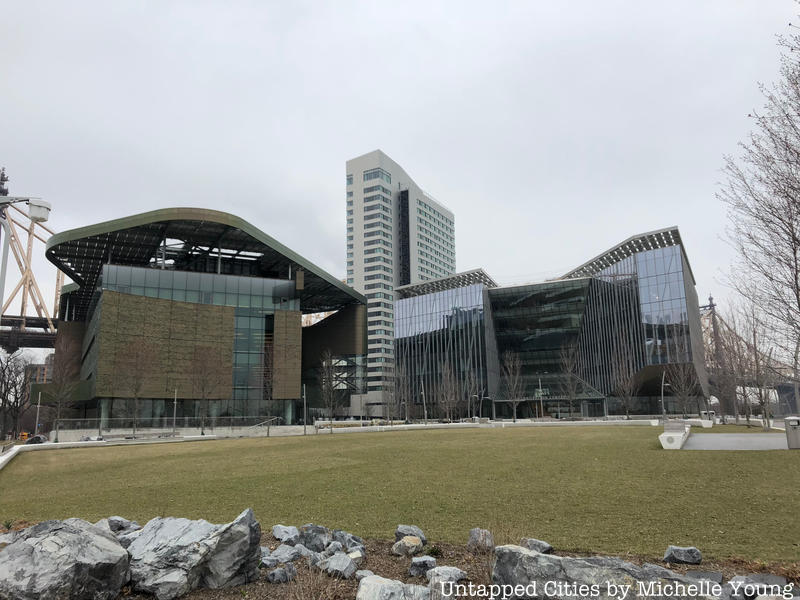9. Cornell Tech Buildings

Roosevelt Island may only span 150-acres, but it’s now home to a “new kind of urban campus:” Cornell Tech. The science and technology-focused university, which was dedicated in September, was born out of a 2010 competition that called for the development of an applied sciences campus within the five boroughs.
Although the campus is slated to undergo two other major phases of construction, it’s currently comprised of three, “environmentally conscious” buildings: the “net-zero” energy main academic building, called the Emma and Georgina Bloomberg Center; the housing quarters for students and faculty, aptly called “The House,” and a center for classrooms, workspaces and commercial tenants, called “The Tata Innovation Center” (formerly known as “The Bridge”), which is owned by developer Forest City Ratner.
Each building boasts various sustainable design features: targeting LEED Platinum Certification, The Bloomberg Center aspires to be one of the largest Net-Zero energy buildings in the United States. It utilizes a passive energy-efficient design that includes a rooftop photovoltaic (solar power) array system and geothermal heating and cooling systems. Similarly, the Tata Innovation Center is built to LEED Silver sustainability standards and features expansive windows, as well as a rooftop terrace surrounded by a solar trellis.
Most notable is The House, which is the world’s largest residential “passive house,” meaning it makes use of sophisticated shading, insulation and ventilation systems to heat and cool its interior. With these incorporated features, the building is projected to save 882 tons of CO2 per year (the equivalent of 5,300 new trees being planted). Read more about the campus here.
Check out the interactive video “Home” at loveyourhome.orsted.com.





